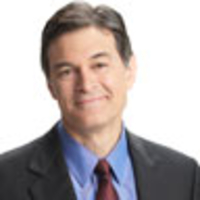
The drama of working as a trainee in an emergency room wore off after a few years and slipped into the crevices of my brain’s hippocampus with all the other sordid memories of my formative years, until my college roommate, Billy Campbell, called six years later. He had graduated from Harvard Business School and then was hired to work in Hollywood at Warner Bros. And he was reaching out to share a script he had just received about a show that seemed so real it reminded him of the raw emotion evident in people desperate enough to seek out an inner-city emergency room. In fact, author Michael Crichton, who had written the work 20 years earlier, was a graduate of my program. The pilot was entitled ER.
The characters were so intimately known by Americans that our own patients sometimes would try to pigeonhole us into the personalities of the ER characters.
I entered surgical internship during the blistering summer of 1986 in Washington Heights in Northern Manhattan. We broke the record for homicides in New York City that year (we had more than 2,000). And I opened a chest nearly every day in the emergency room. Billy would hang out with me, which speaks to his personality since few of us want to be in an E.R. until we need to be in one. Yet his macabre interest presaged a similar curiosity of millions of Americans. His only credential was his ability to follow directions, so Billy would act as an orderly (we desperately needed the help anyway). He spoke to an alcoholic and kept him in the air-conditioned waiting room until I could help him detox. With his charming Southern accent, he calmed a combative patient so I didn’t need to administer a sedative as I treated the broken bone. He also handed me instruments as I sewed up the face of a beautiful Latina woman whose boyfriend had slashed her face at the base of the George Washington Bridge.
ADVERTISEMENT
So when Billy sent me the ER pilot, I loved the authentic and unfiltered plot. The show captured the ups and downs of touching another person’s life during those moments when we filter out all the b.s. and experience unadulterated life because nothing else matters more. Billy and Warner Bros. agreed and gave birth to the landmark series that would run on NBC for 15 years, changing the lives of its stars and creators.
The show also changed the lives of many Americans by exposing them to the lives of their fellow humans in extreme circumstances. It is not the disease, but the person with the disease that ultimately draws our compassion. Who didn’t see some part of themselves in the harried, worried faces of the strangers that found themselves in the E.R. each week—the mothers going into childbirth, the patients with unexplained symptoms, the accident victims? In their stories, we see ourselves coping with conflicts that we did not viscerally realize existed until we tuned in at 10 p.m. on Thursday nights.
ER went one step further in bringing the caring, insightful, and flawed healers into our living room. We were made to feel like we were partnered with the ER staff. Our mirror neurons fired away as we identified with George Clooney’s Dr. Doug Ross and Julianna Margulies’ Carol Hathaway exorcising their demons. The cinematographers frenetically followed docs as they popped in and out of exam rooms just like they do when viewers are sitting in an examination bay nervously awaiting a diagnosis. Every week, the series provided a glimpse into the goings-on of the personal side of the staff beyond the chaos of the emergency room, giving us a chance to see our healers as humans with lives outside the hospital. The characters were so intimately known by Americans that our own patients sometimes would try to pigeonhole us into the personalities of the ER characters.
ER also brought medicine to prime-time and spawned a generation of medical shows that made the study of illness cool and even fun. Together with competitor Chicago Hope, which launched the same week, America learned that Marcus Welby, M.D. had indeed retired. Doctors and nurses were not sterile brainiacs, but people trying to figure out life while helping other people do the same. I graduated from my residency program in cardiac surgery just as ER became a national phenomenon, joining a new generation of docs who felt comfortable with the not-so-profound insight (in retrospect) that our patients don’t always read the same textbooks that we study, so their illnesses are as varied as they are. As we examine the illness, we stumble upon a treasure trove of memories and habits that are as important as the presenting illness.
When the producers and I address health topics on The Oprah Winfrey Show, we are reminded of these sensibilities. Moving viewers past the intellectual curiosity about an ailment into an emotional realm of understanding is essential to motivating change. Part of this transformation requires the scary insight that you are indeed the world expert on your body. Doctors and nurses are fallible humans, and need your help if you want the care you crave.
ER lifted the veil on orthodox medicine and hastened this epiphany as the show became a hit. And America’s expectations also changed as we met female, African-American, Asian, and gay and lesbian doctors. Although emergency rooms have always existed, often invisibly, this landmark series opened a window onto a world that both patients and doctors value every day. ER transported viewers into a world that many of us historically feared, but I bet that many of you are now more comfortable dealing with your local hospital because you were brought up knowing Chicago's fictional County General Hospital. I hope you were taking notes.
Dr. Mehmet Oz is Vice-Chair and Professor of Surgery at Columbia University. He directs the Cardiovascular Institute and Complementary Medicine Program at New York Presbyterian Hospital. Dr. Oz is also the best-selling author of You: The Owner’s Manual and the award-winning Healing from the Heart, as well as the Health Expert on The Oprah Winfrey Show. His own talk show, DR. OZ, premieres this fall.





